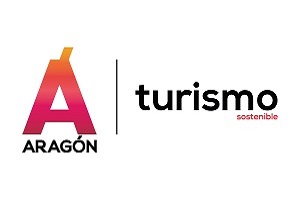The Coll del Moro is a place in Gandesa (Tarragona) full of history. There, very close to the border with Aragon, there is one of the few Iberian settlements that are preserved in Catalonia. And, bordering this site, Agustin Fornós has his olive trees, millenary and of the farga variety, an olive that probably brought the Phoenicians to the peninsula. It is with these fruits loaded with history that he elaborates an extra virgin olive oil that has the famous chef Dabiz Muñoz among its followers. From Coll del Moro to Trasmoz (Zaragoza), passing through Calaceite (Teruel), this is the route of a brand that, since its foundation in 2010, has been committed to quality and has accumulated awards.
 “According to Roman writings, it is a type of olive tree brought by the Phoenicians when they traded with the Iberians”, explains Fornós about this variety. He, a native of Gandesa, owns some fields that now serve to create an oil that is processed by hand very close to there, in Calaceite, until reaching Trasmoz, where he has lived for decades and where the brand that bears his name is located.
“According to Roman writings, it is a type of olive tree brought by the Phoenicians when they traded with the Iberians”, explains Fornós about this variety. He, a native of Gandesa, owns some fields that now serve to create an oil that is processed by hand very close to there, in Calaceite, until reaching Trasmoz, where he has lived for decades and where the brand that bears his name is located.
A project with family roots, since the fields already belonged to his grandfather. In fact, his father was a master of oil mills and, thanks to him, he acquired the knowledge he now treasures for the production of oil, which is carried out under clear principles: “Trying to do things well done; we give priority to quality, not quantity, and we are on this path”, he summarizes.
He embarked on this path twelve years ago, after taking early retirement as a bank employee, and in it he mixes his place of origin and his place of adoption, since he has been living for more than 40 years in Aragón, in Trasmoz, where his wife is from. In this town in Zaragoza, he also has olive trees of the Arbequina variety, with which he also produces olive oil.
However, of all the oils he markets, the most striking are those he makes with olive trees, many of which are thousands of years old, of the farga variety. In this sense, and although he gives value to the fruit, he emphasizes: “The climate, the soil, the subsoil, the way of elaboration and how it is worked in the cellar have a great influence”.
Artisanal process

In his case, the harvesting is done “on the full moon of October”, between the 12th and 20th, in order to get rid of an olive that is collected “in green” and taken to the oil mill in Calaceite: “They rent us the machinery and the personnel and we make the oil for ourselves, on the same day, to our taste and in our own way”, he says.
“The whole process is handmade and the extraction is cold, as it has to be”, he explains about a procedure in which they control the speed of the hammers, the temperature, the beating time and other variables to obtain an optimal and unfiltered product.
From there it is taken to Trasmoz, where an oil “that hardly becomes rancid” and “with a lot of stability” is preserved. As a curiosity and a sign of the ancient origin of this olive tree, Fornós explains that the word empeltrar, which in areas of Aragón, Valencia and Catalonia means to graft, gives its name to the empeltre variety which, precisely, derives from the farga, an ancient olive that was difficult to root and which had to be grafted.
The trees that supply it, in some cases, are thousands of years old. “They are all, or at least 90% of them, more than 500 years old, without a doubt,” he says of these specimens that even rest next to vestiges of antiquity, very close to the Iberian settlement.
With the farga they make their Templarius oil, which has won awards such as the silver medal of the Mezquita de Córdoba Prize. “Dabiz Muñoz buys this oil from us to make, as they tell us, the elver dish,” he adds about a liquid gold that is also used by the chef of the Hotel Melía in Marbella, Víctor Carracedo.
His followers are not only in Spain, but the brand also sells abroad, as for example to a Japanese customer who has been buying his products for years. “We have had customers who have come from China, or French, to see the olive trees and fall in love with them,” he exemplifies.
Among the top 100

Templarius is not the only award-winning product of Agustín Fornós, as the oil made with arbequina has received awards in Rome, Dubai or, again, in Córdoba, where it won the special gold medal and was the highest rated in the single-varietal category. “In arbequina we have always been among the top 100 in the world,” he adds.
In this case, he explains that the fields are in Gandesa, but also in Trasmoz, and production is “more mechanized” than for the oil made with farga. With arbequina they also make their oils macerated with chili pepper, rosemary and oregano, “all natural products and wild organic farming,” he adds.
To promote them, he was recently in the Aragonese capital participating in the I Agroalimentary Exhibition organized by the Diputación de Zaragoza in the Palacio de Sástago. There he was able to present his products with tastings and samplings, like the twenty producers from the province who attended the event.
Now, and although it seems that oil is gaining ground as a gastronomic product and interest in it is beginning to proliferate, Fornós laments that “nobody knows what oil is, it is not valued, nor is it taken into consideration”.

“The oil, to be of quality, must be treated, improved and made into extraordinary products. And for that you have to train people from a young age,” says this expert.
In fact, and in a scenario in which he has to compete with, for example, Andalusian oils, a territory that has a well-established brand in that market, he regrets that, in Aragon, despite the quality of its products, “people do not know how to value what we have”. “More people even from Cordoba and Jaen distinguish it to you”, he says.
Finally, when asked how to distinguish if an oil is of good quality, he says, amused: “When do you know it’s the best oil? When you leave the plate clean and scrubbed”, he concludes, jokingly.















